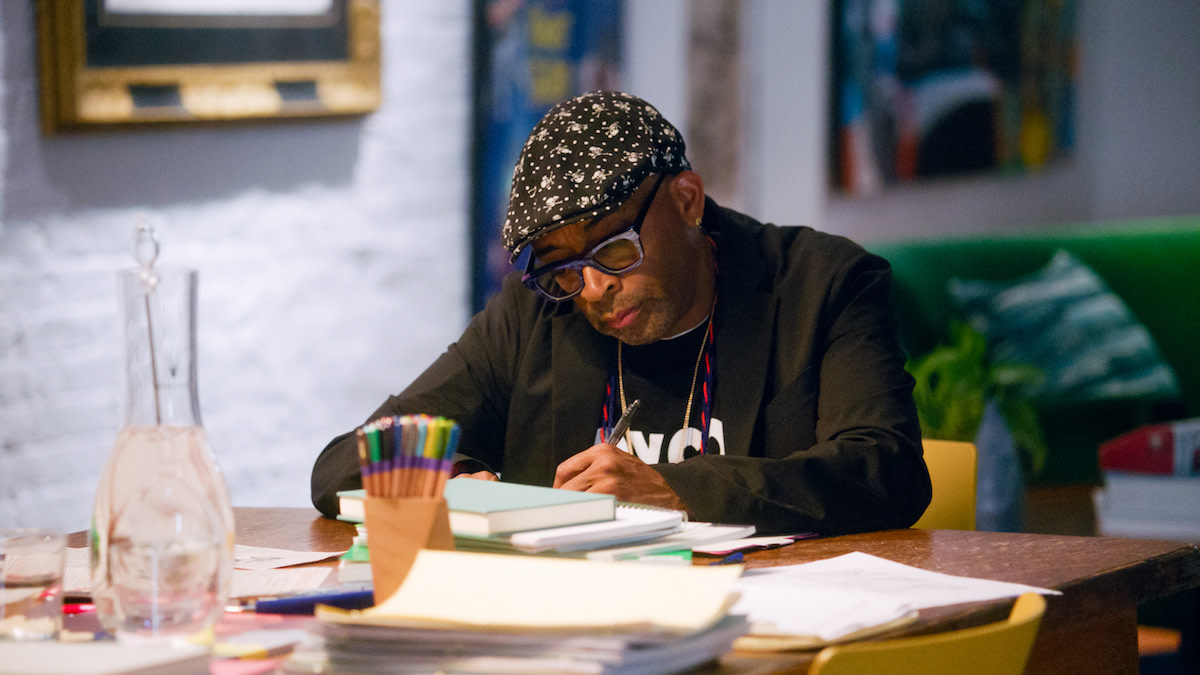Spike Lee Shares 7 Tips for Prepping a Film Shoot
Written by MasterClass
Last updated: Jun 7, 2021 • 3 min read
Spike Lee is perhaps best known as the filmmaking master behind iconic Hollywood films such as Do the Right Thing, Malcolm X, Jungle Fever, Inside Man, and BlacKkKlansman. Ever since Spike taught himself the ins and outs of film budgeting while producing his first indie film, he's gained insight that is indispensable to young filmmakers. Spike’s tips will help you create a harmonious set for your next film shoot.
Learn From the Best
A Brief Introduction to Spike Lee
Spike Lee first captivated our cultural consciousness in 1986 with his debut film, She’s Gotta Have It, a story about a sexually empowered woman in Brooklyn and her three lovers, told in black and white. Over his long and varied career, Spike has often drawn from the well of his own life, which encompass everything from historically Black colleges and universities, colorism in the African-American community, culture clashes in Brooklyn, New York, love, and jazz, interracial relationships, and addiction. Spike Lee continues to make movies—and make moves: In 2010, the Library of Congress selected Malcolm X for preservation in the National Film Registry, and his most recent film is 2020’s Da 5 Bloods.
Spike Lee’s 7 Tips for Prepping a Film Shoot
There is an art to running a smooth set during a feature film production. Doing so requires a combination of professionalism, leadership, good humor, and respect for the crew on the part of the director. Laying the groundwork for a harmonious set comes early in the pre-production process. Here are Spike’s tips for how to properly prepare for the filmmaking process:
- 1. Plan the cinematography. Before you start shooting, go through the script scene by scene and create a plan of action. Get the most fundamental shots before pursuing the more ambitious ones, yet be flexible and allow your cinematographer (also known as a director of photography or DP) room for improvisation and inspiration.
- 2. Storyboard. Storyboarding during pre-production planning can be supremely useful when directing big action sequences. Drawing out your shot list can be an organizing principle in the cacophony of producing complicated shoots. Storyboards become a precise map of what’s almost certain to be a hectic shooting schedule. You want to get this right.
- 3. Brief your crew members. At the beginning of each shoot day, Spike gathers his film crew—the camera person, the first assistant director (AD), the key grip, gaffer, and script supervisor—to discuss the day’s schedule. This way, everyone is on the same page about what needs to happen and the team can better transition from shot to shot.
- 4. Set the ground rules. For Spike Lee’s films, he insists upon a respectful silence during takes and even set ups, as the actors could be rehearsing. Creating a list of on-set rules will help create a safe working environment for your actors and the rest of your crew.
- 5. Communicate. A director begins dialogue with his cast well before the camera starts rolling. Spike likens his role to being a coach of a sports team. That said, just as all athletes are not the same, neither are actors. While Spike Lee films sometimes feature a degree of improvisation, he uses his rehearsal time to find out which cast members are better at it than others. The job of a director is to quickly recognize how to draw out the best performance. Sometimes that means watching an actor’s past work.
- 6. Do read-throughs. Have your actors read the screenplay aloud—without acting. This can help the director better know what works in the script and what doesn’t. When Spike does a read through, he’s listening to hear how the language sounds. Do the jokes land? Does the language seem natural? Take notes, which you will incorporate into the rewrite.
- 7. Settle conflicts. Spike strongly recommends any conflicts of approach be handled well before the cameras start rolling; otherwise, these same issues will show up on set. Part of the dance between actor and director is to allow the actor a certain amount of space to breathe within the role.
Want to Learn More About Film?
Become a better filmmaker with the MasterClass Annual Membership. Gain access to exclusive video lessons taught by film masters, including Spike Lee, David Lynch, Shonda Rhimes, Jodie Foster, Martin Scorsese, and more.
